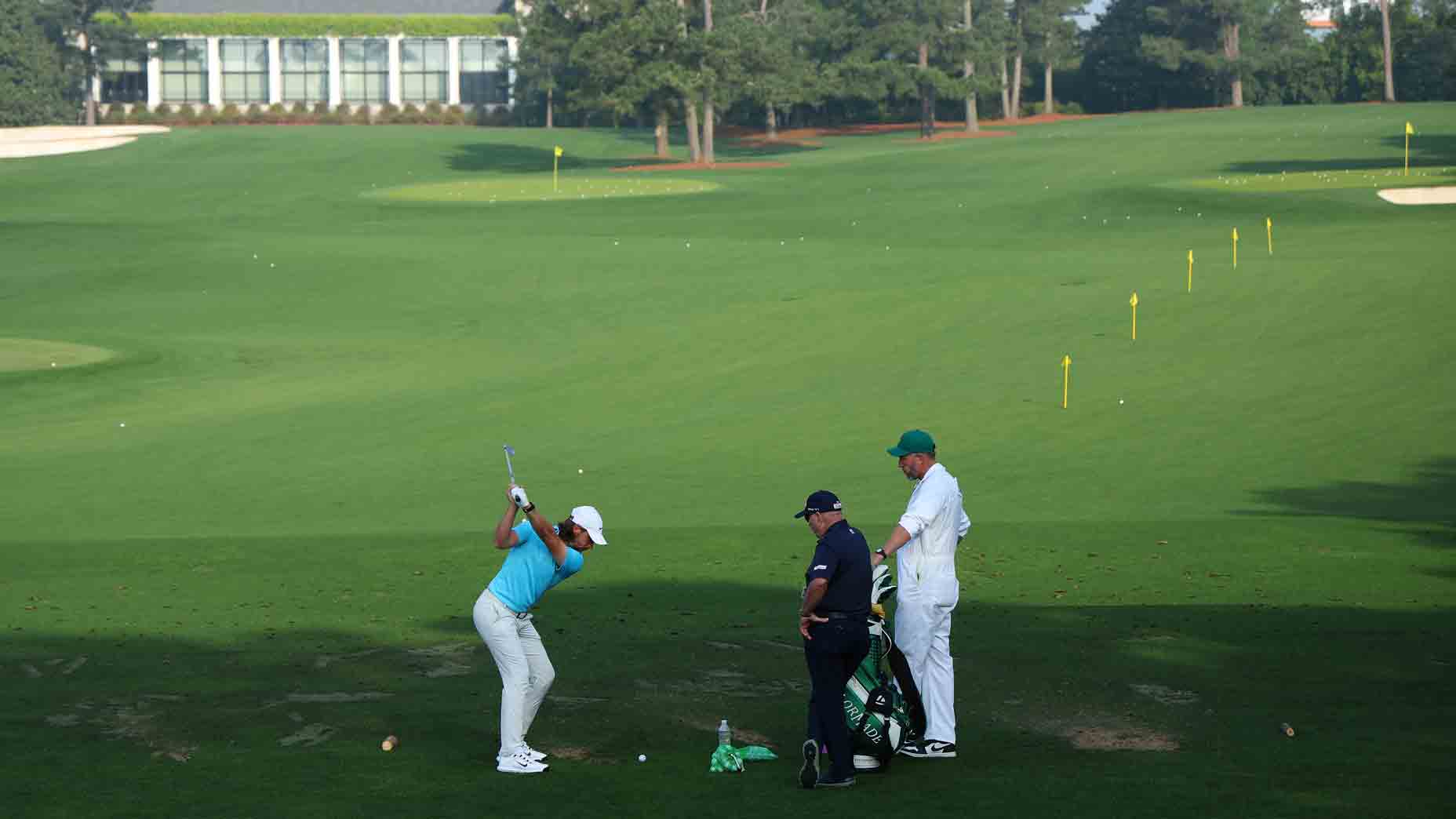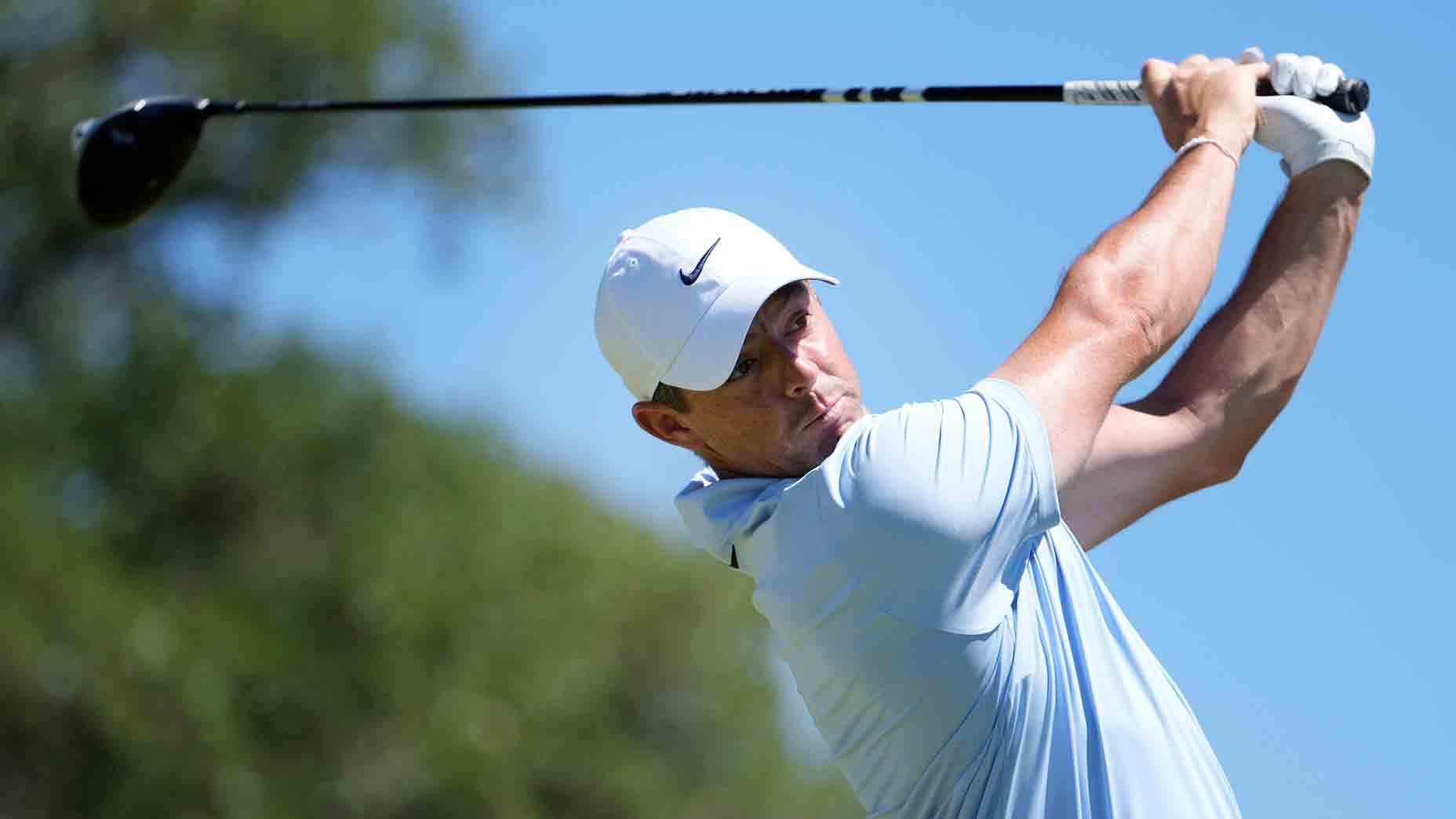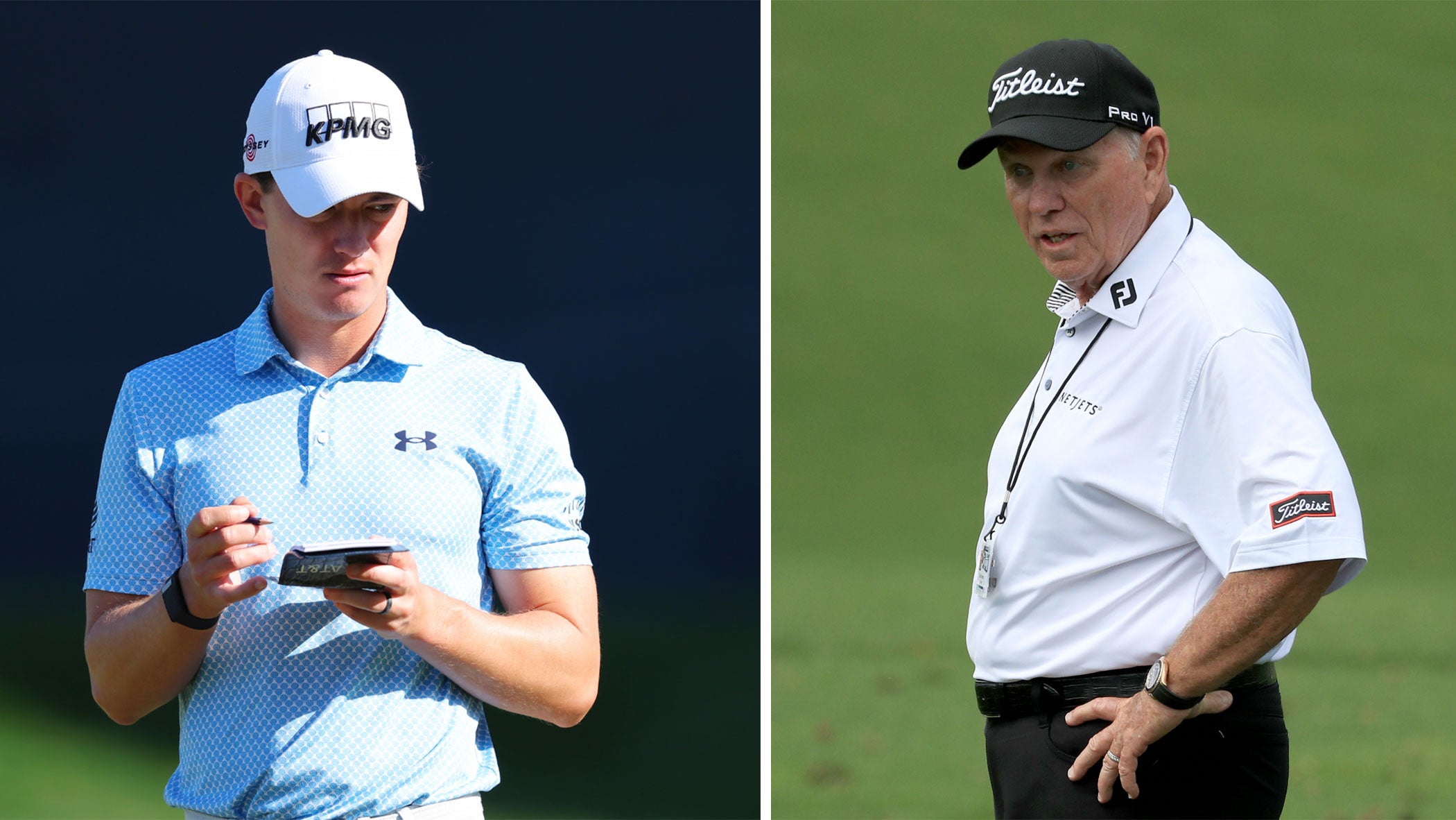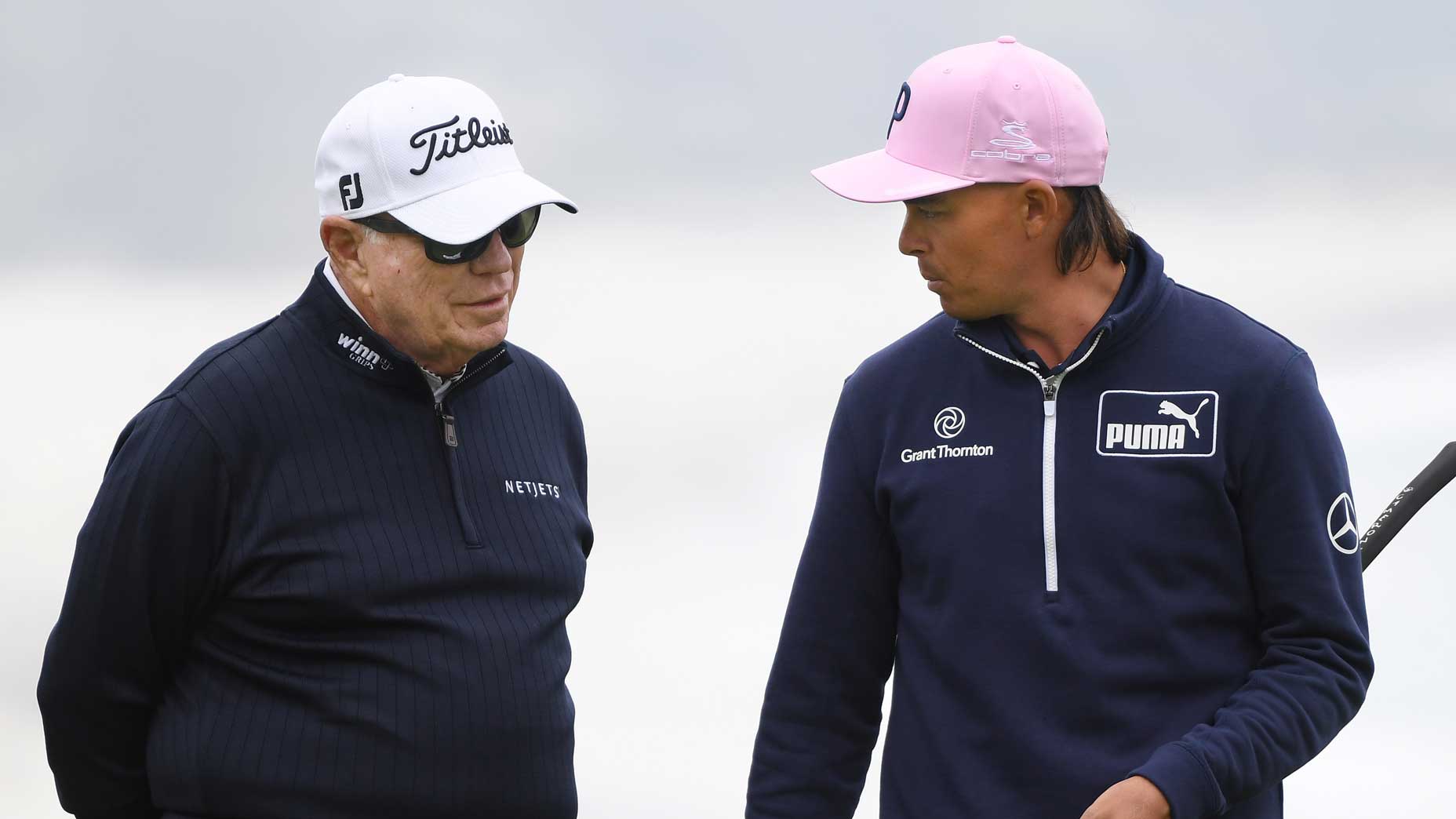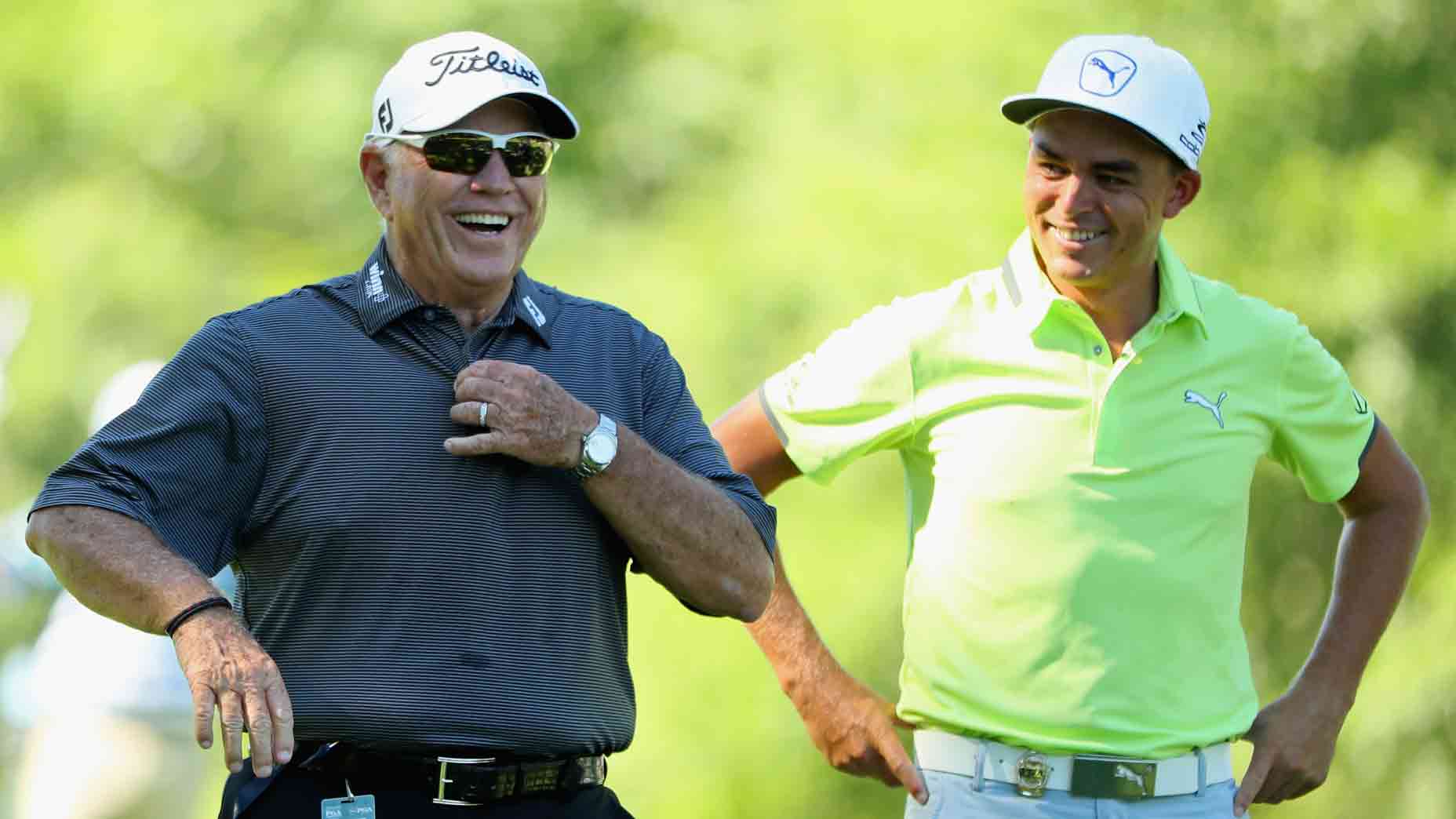If you’re hitting the ball right, Butch Harmon says, try to hit it left.
And vice versa.
“I’m a great believer — and I learned this from my dad — in opposites,” he said.
Harmon, a GOLF Top 100 Teachers hall of famer, was talking on a recently recorded episode of A New Breed of Golf on SiriusXM, and the subject was a much-discussed one: How to fix a slice. After his initial opposites thought, Harmon dove into what that looks like.
There are a few steps, said Tiger Woods’ one-time coach:
— Use a stronger grip.
“So if you’re a slicer,” Harmon said on the show, “normally you’ve got the clubface open too much, you’re a little over the top, your path is a little out to in, unless you’re hitting a big push from underneath. So I would really look at a person’s grip, I would strengthen their grip, get the top hand — which for me, being right-handed, left hand about two or three knuckles and the right hand under.”
— Use a more closed setup.
— “Let them exit around their body as much as they can,” Harmon said on the show, “to try and get the clubface closed coming in.”
Harmon also said he has two training devices. The first is a club that’s a couple feet long — which can accentuate to a player the movement of the club face.
“I have a club that’s about … just as long as a grip, and I use that a lot in reference to show people what their grip does to control the club face,” he said on the show hosted by Michael Breed, a GOLF Top 100 Teacher lifetime achievement recipient. “And when you get your hands this far on the club face, you can really see it. And I explain to them, you’re coming in too much this way. If we get this left hand over and right hand under, this toe is going to get in there more. And then if we get you coming a little more from the inside, you can get that club releasing.”
Harmon’s other move is to have a player swing in slow motion.
"If you're slicing it. I'm gonna try and make you hit a big hook"
— SiriusXM PGA TOUR Radio (@SiriusXMPGATOUR) July 1, 2024
Butch Harmon talks with @MichaelBreed about his way of fixing the dreaded slice
Hear more from Butch & some of golf's best teachers all week long on A New Breed of Golf…8-10am eastern & on the SiriusXM App. pic.twitter.com/QuHkt2HAXF
“And I film it,” Harmon said on the show. “Because in slow motion, you can make your body pretty much do whatever you want. And I’ll have them hit balls for maybe five or 10 minutes, on a tee, with, say, a 6- or 7-iron, in slow motion, stronger grip, a little bit more of a closed stance, feel like you’re hitting the inside of the ball, not the outside of the ball, which is what you do when you come with the over-the-top swing.
“And two things happen: No. 1, they can feel the process, they can feel what they’re trying to do; but No. 2, they’re amazed at how far they hit it with what they think is a slow-motion swing.”
Editor’s note: To listen to A New Breed of Golf, please click here. [A SiriusXM subscription is needed.]
Editor’s note two: Recently, three-time major winner Padraig Harrington also vouched for trying to hook in order to fix a slice, and that story can be read by clicking here or scrolling below.
***
Hook, Padraig Harrington says.
And hook and hook and hook some more.
“The biggest hook you can, like 20, 30, 40 yards of a hook, the worst-looking shot,” he says.
And that’s how amateurs can correct a slice, he believes.
And that’s how amateurs can also understand clubface control.
And that’s how amateurs can also learn this:
“There is no golf swing that stays the same,” Harrington said.
He was talking during a recently released episode of “The Rough Cut Golf Podcast” — which you can listen to in full here — and the slice subject is a popular one. Right-handed amateurs ship it right often (and lefties left). Amateurs also research the cure for it as if it were a disease. Just Google “how to fix a slice” and get ready to scroll and scroll.
Harrington’s thought, though, is somewhat simple.
Go left if you’re a righty. Go right if you’re a lefty.
“So most amateurs, say if you’re hitting a slice, they think, well, I want to learn how to hit this beautiful, straight or say a 5-yard draw,” Harrington said on the podcast. “Well, actually, if you’ve got a slice and you want to get rid of it, you’ve got to stay on the range and hit the biggest hook you can, like 20, 30, 40 yards of a hook, the worst-looking shot. And you’ve got to keep hitting that for a while.”
Over time, though, Harrington said, the players will start to hook the ball, which then requires range work in the opposite direction. On the range, the golfer should purposely try to slice the ball.
There are a pair of consequences.
Harrington thinks the player will learn clubface control. Notably, at a different point in the episode, he noted that understanding that is an issue for “people who strike the ball badly.”
“So for most amateurs,” Harrington said on the podcast, “they’d be better off going to the range and hitting a big hook and a big slice and the complete opposites every second shot, and then at least they’ll understand. And what shut face is and an open face. And as they get better, they can reduce how much they’re doing it. Whereas most people are going from a big slice to trying to get square face. And unfortunately, most amateurs do not know what a square face is. So they have some chance to know what a shut face and an open face is, but they’ve very little chance to know what a square face is.
“So you learn by doing the extremes.”
And eventually the ball will go left. Or right.
But just don’t expect things to stay that way, Harrington said.
Golf, right?
“It’s [the swing] never going to stay the same,” Harrington said on the podcast. “Don’t believe it ever will. It always — always in golf, you go from one to the other and you overdo it a little bit. OK, now stop that, go back, and hopefully the better you get, the less that moves, that it’s only a slight fraction of movement, but it will never stay the same for the rest of your life.
“There is no golf swing that stays the same.”
